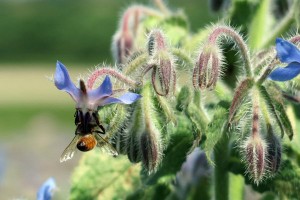Microsensors may be the key to solving the mystery behind the collapse of honeybee colonies. Australian researchers announced that they have attached tiny, top-of-the-line trackers to about 10,000 healthy honeybees in an effort to find out what is driving a decline in the pollinators’ global population. The experiment, supported by an international group of scientists, farmers, beekeepers, and tech companies, is the latest to use tracking and tagging technology to study animal behavior and responses to stimuli.Latest News
“The tiny technology allows researchers to analyze the effects of stress factors including disease, pesticides, air pollution, water contamination, diet, and extreme weather on the movements of bees and their ability to pollinate,” said Dr. Paulo de Souza, science leader at Australian science agency CSIRO, which helped develop the technology, in a statement. “We’re also investigating what key factors, or combination of factors, lead to bee deaths en masse.” The tiny sensors, like the electronic tags that monitor cars on toll roads, send data back to receivers that are about half the size of a credit card which are placed in honeybee hives, the BBC reported. The trackers, attached to the pollinators’ backs, weigh about a third of what a bee can carry.
The bee backpacks are the latest innovation in a series of high-tech tracking devices and sensors designed to both study and protect declining animal populations. In the case of honeybees, scientists hope to figure out what’s behind colony collapse disorder, a syndrome characterized by the mysterious death or disappearance of adult worker bees, causing whole colonies to fail. In the United States alone, nearly a third of bee colonies have vanished due to the disorder, according to the National Resources Defense Council. “In some parts of the world, a healthy hive of bees can be like clockwork one day, and then every single bee is dead the very next day, and we have no idea why,” CSIRO’s Dr. Souza told the BBC. The syndrome, coupled with habitat loss, pesticides, disease, and parasites, has devastated wild bee populations worldwide. If left unchecked, these factors could threaten global and domestic agriculture and food production, which are dependent on pollination.
Honey bees are vital to both local ecosystems and the economy. Bee pollination accounts for more than $15 billion in increased crop value every year, according to the USDA, and is crucial to growing plants that produce a quarter of the food consumed by Americans. If losses continue at the current rate or worse, continue to rise, “it could threaten the economic viability of the bee pollination industry,” the USDA warned. ‘The cost of honey bee pollination services would rise, and those increased costs would ultimately be passed on to consumers through higher food costs.”
CSIRO, in cooperation with US tech firm Intel and Japanese conglomerate Hitachi, has already tagged bees and hives in Tasmania, where the population decline is less severe.”What we are gathering with the sensors is environmental information from where the bees have been,” Gary Fitt, science director of the CSIRO’s health and biosecurity division, told the wire service. “We will use the same approaches and ask similar questions but in different parts of the world to get a much bigger picture of the problem and collectively find solutions.”
For more information please visit: www.intel.com

